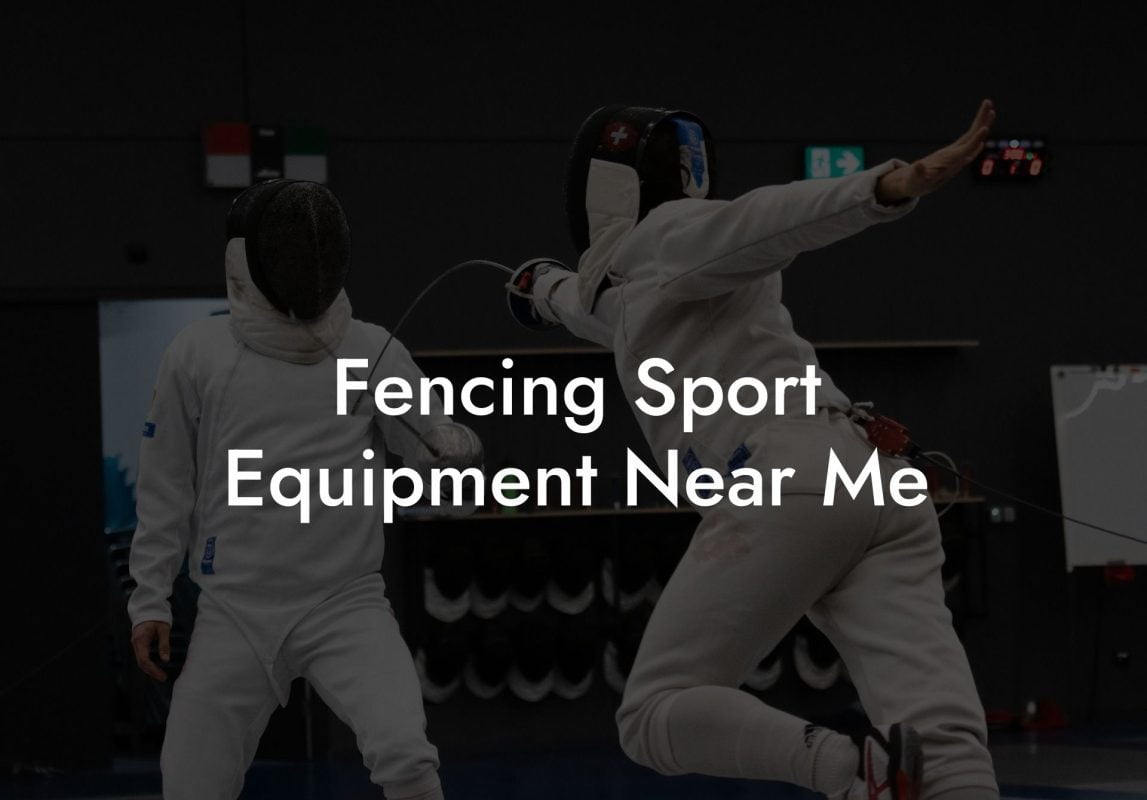Are you a fencing enthusiast looking to delve deeper into the world of épées, foils, and sabres? You've come to the right place! In this comprehensive guide, we'll explore the different types of socket lines in the sport of fencing and help you understand their significance, usage, and proper maintenance. Read on to discover how the subtle, yet essential, socket line can make all the difference in your fencing performance.
Fencing Sport Different Socket Line A Table of Contents
Socket Lines: The Electrical Connection
In fencing, the socket line (also known as the “A-Line” or “body cord”) serves as an essential electrical connection between your weapon and the scoring apparatus. This connection ensures that every touch you make is registered accurately, leading to fair and undisputed results. It might sound simple enough, but there’s more to socket lines than meets the eye.
Three Types of Fencing: Foil, Épée, and Sabre
In order to understand the nuances of socket lines, it's important to first familiarize yourself with the three primary types of fencing:
- Foil: A light, thrusting weapon where the primary target is the torso, with scoring done exclusively with the tip of the blade.
- Épée: A heavier thrusting weapon, similar to a dueling sword, in which the entire body is a valid target area, and scoring is done with the tip of the blade.
- Sabre: A light cutting and thrusting weapon, where the target area is the upper body, including the head and arms, and scoring is done with either the tip or the edge of the blade.
Different Socket Lines for Each Weapon Type
Based on the specific rules, target areas, and scoring methods for each type of fencing, there are distinct socket lines required for each weapon. Let's break down these differences.
Foil Socket Line (Two-Prong)
- Typically features a two-prong plug connection.
- Requires a “lame” (pronounced “lam-eh”), which is a metallic, conductive jacket worn over the torso to register touches.
- Specialized wiring ensures that only touches on the lame score a valid point.
Épée Socket Line (Three-Prong)
- Has a three-prong plug connection for a more secure connection.
- No lame required, as the entire body is a valid target and any touch is registered as a point.
- Designed for use with an épée’s unique, stiffer blade and specialized tip that contains a spring-loaded plunger to register touches.
Sabre Socket Line (Two-Prong)
- Like the foil socket line, the sabre uses a two-prong connection, but the wiring and connection type differ - they are not interchangeable.
- Requires a lame covering the upper body and a conductive mask to register touches made by the blade’s edge.
- Often has a tensioner clip that supports the socket and prevents it from disconnecting during vigorous bouts.
Fencing Sport Different Socket Line A Example:
Imagine a foil fencer equipped with the wrong socket line - say, an épée socket line instead. The mismatched connection might fail to register touches accurately, causing frustration, inaccurate scoring, and potentially even disqualification. Such a seemingly minor detail can have major consequences on a fencer's performance!
Now that you've gained a solid understanding of the different socket lines in fencing, remember to choose the appropriate body cord for your chosen weapon type to ensure accurate scoring and peak performance. Whether you're a seasoned fencer or just starting out, feel free to explore more insightful guides here at Anchorage Fencing Club to further enhance your knowledge and love for this fascinating sport.
Share this article with fellow fencing enthusiasts, and don't hesitate to let us know what topics you'd like us to cover in future articles. Keep striving for excellence on the piste, and as always, happy fencing!













